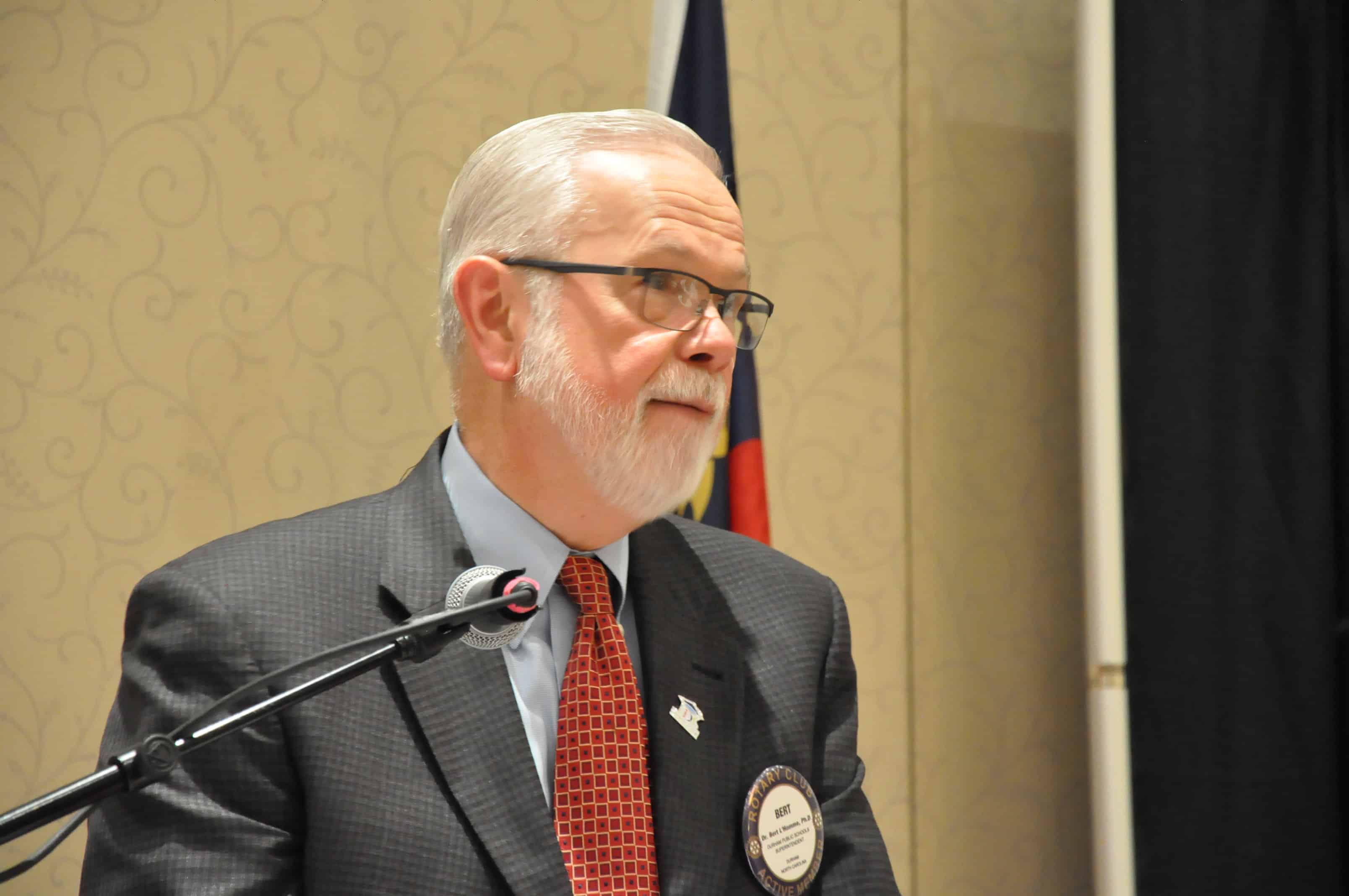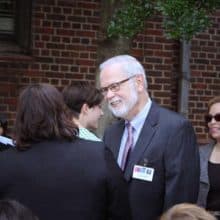There are a lot of great things happening in Durham Public Schools.
And yet, we have much to do.
I have worked in many different roles in and outside education, but always as an advocate for what is best for children. In Washington, D.C., I worked for Marian Wright Edelman and the Children’s Defense Fund, most specifically on ending the Cradle to Prison Pipeline Campaign. As Superintendent of Schools for the Archdiocese of Washington, I was able to combine my two vocations, as an educator and a Deacon in the Catholic Church. That is where I thought I would end my career.
But then a calling I didn’t expect came — here in Durham. And I had never sold my house.
I have always loved Durham: the energy, the spirit of community involvement, the creativity and most of all the potential that lies within our city and county — most clearly in our children.
I’ve been on the job since July, some of the busiest months I’ve ever spent. But the children of Durham are worth all those long hours and more.
When I returned we were only one week away from the beginning of the year-round school year, with the traditional-calendar students hot on their heels. Our teachers and principals had been through a difficult leadership transition.
There wasn’t time to craft an elaborate strategic plan with hundreds of benchmarks. We had to start serving students immediately, while also providing our teachers and principals clear and simple goals to strive for. The 19th century writer Oliver Wendell Holmes, Sr., said:
I find that the great thing in this world is not so much where we stand as in what direction we are moving: To reach the port of heaven, we must sail sometimes with the wind and sometimes against it — but we must sail, and not drift, nor lie at anchor.
So, where are we sailing?
It’s a deceptively simple goal: every student graduates, and every student who walks across the stage is prepared to follow their dream.
No student should ever have to settle for less.
That’s deceptively simple, because our public schools are more than education factories churning out graduates. They are also expressions of the kind of community we want to have and build. They reflect our dreams for our children, but also uncomfortable realities of inequity and need. Every public policy challenge and every social injustice finds some expression in our schools, because our children are the most vulnerable members of our community.
The challenge for us, as teachers, principals, and school system administrators, is that academic growth is in fact our bottom line. We must work with our community partners to address root causes and find opportunities to effect change — but we are teachers first, and we must play to our strengths.
Any student can succeed in Durham Public Schools. We had students traveling to NASA to launch rockets just this month. Every student graduated from three of our small high schools: City of Medicine Academy, J.D. Clement Early College, and Hillside New Tech. Nearly three-fourths of our schools met or exceeded academic growth expectations. But our overall performance still needs to improve, far too many students are not on track for college and career readiness, and achievement gaps persist.
Expanding academic success to all rather than only some students is therefore my highest priority.
It is what we talk about almost exclusively with our principals and teachers: how can we better challenge and engage every child?
There are two high-level issues that we’re working on and are concerned about: how our state will continue to support our schools and our local budget. But these broad issues specifically affect more than 34,000 boys and girls who come to our schools every day deserving the best education in the state. That should be our objective.
In the short term, our four goals are to increase academic achievement, increase our graduation rate, decrease our suspension rate and decrease our dropout rate. I hope for and expect continuous improvement in these areas. But we must set our sights high, for our children’s sake.
First, let’s talk about state support of our schools.
Durham Public Schools is a unique district in a pivotal time. We have a high percentage of students receiving free or reduced price lunch. We have access to the technology and promise of the Research Triangle, two major universities, a strong community college and a robust medical industry. We have profound needs and profound opportunities.
We have a community that demands excellence and students that cannot wait—but we also have years of funding reductions from the state that are becoming impossible to absorb.
2008-09 was my last year as superintendent of Franklin County Schools. When I left, North Carolina was spending $8.7 billion a year on K-12 education to serve 1.47 million children—and then the Great Recession hit and funding was slashed dramatically.
This school year, I came back to North Carolina to discover that our state is serving almost 44,000 more children, but the appropriation has only just recovered to the Great Recession’s level. So, per child, the education dollars we spend have declined by $130, or 2.2 percent.
That’s before you take inflation into account. On top of that, more than $1.3 billion of that state spending is going to employee salary and benefit changes that have happened since I left Franklin County Schools. Take those state mandated salary changes and the cost of health care and retirement benefits into account, and that’s more than a billion dollars in state cuts. In the last seven years teacher funding has declined 3.5 percent, teacher assistants by 22.9 percent and textbooks by 78.1 percent.
Durham Public Schools has been fortunate in many ways. We have both the population density to support innovative programming and support services, and also the community will to support public education. Our citizens, through their elected representatives, have repeatedly answered the call when it comes to supporting Durham Public Schools. Your administrators and board members know how much we depend on local support and we are very grateful. That community investment is one of the reasons I came back to DPS.
But we are looking at seven years of continuing funding and program cuts by the state of North Carolina.
Our history in Durham has been to ask our county to shoulder the burden, and year after year through local appropriations we have attempted to absorb these cuts. That is simply not sustainable.
In Durham we are especially pressured by charter schools, which have increased flexibility and fewer obligations to provide services such as special education and transportation. Since 2008, Durham County’s charter school population has increased by more than 77 percent while DPS’s population grew by only 8.6 percent—and some of the charter school students enroll in schools outside Durham County, with Durham County money following them.
This would not be as concerning if this was a simple matter of the same dollars equitably following the same children from public to charter schools. But charters may locate wherever they can obtain space, regardless of demand in the area or proximity to other schools. They tend to attract families with more resources, leaving DPS schools to serve more children with greater or special needs. And if the General Assembly allows charter schools to take a share of county capital funding in addition to operational funding, there would be less funding for badly needed renovations and new schools.
But our children can’t wait for us to “get the funding right.”
My commitment is to every child in Durham Public Schools regardless of address or background. We are shifting our resources to provide more support for teachers, including professional development and mentoring, and we are ensuring a higher-quality learning environment through classroom management training, increasing our alternatives to suspension, and expanding our efforts to reduce dropouts and truancy. In short, we are holding ourselves accountable for success despite the changes in our state.
But, again, we must do that with less per-pupil funding.
Second, let’s discuss with you today: our local budget.
Without changes to our 2014-15 budget for 2015-16, we face an $11.5 million shortfall, and that’s before an expected additional $5.7 million we need to find for state mandates and cost increases. This means that Durham Public Schools must now make the same kinds of spending reductions that our neighboring school districts have had to make in recent years.
This year’s budget proposal has as our top priority to protect the classroom and instruction as much as possible.
As a result, most of our budget cuts—61 percent of them—will come from our central services: my offices, the school board, operations, finance and academics. In making these cuts, our highest priority is to preserve those services that have a demonstrable impact on student academic achievement—but our schools will feel it. Our IT department won’t be able to respond as quickly when a computer goes offline, for example.
Our other cuts will directly affect schools, but no current teachers or teacher assistants should lose their positions. We are cutting back on the number of days newly-hired teacher assistants will work, for 187 days rather than 215. We are adjusting teacher allotments and reducing school clerical positions.
We will be asking for a small funding increase from the county, specifically targeted to accommodate enrollment growth in DPS and charter schools—otherwise, our funding per student would decline. We are also requesting support for some additional salary support for our experienced teachers and for extra duty funding.
This is a cautious budget request that asks our staff to take on more responsibilities with somewhat fewer resources, at a time when our academic standards have been rising, charter schools have proliferated, vouchers have been offered and letter grades have been applied to our schools that don’t take enough account of how much progress our students made from year to year.
We graduate more than 81 percent of our students, more and more each year for the last six years.
We teach 27 Advanced Placement courses for college credit across Durham Public Schools, with the number of students enrolled in them rising each year since 2012.
More than 5,300 people volunteer with our students each year.
We have one of the eight top principals in the state this year, the top assistant principal in the state, the top career-technical education administrator in the state, one of the top teachers of the year in the state, and the top teacher of the gifted in the state for 2014.
Yes, Durham Public Schools has a long road to walk down. Our schools have not yet reached their potential. Remember what I said in the beginning: every Durham Public Schools student deserves the best education in the state. That means facing and overcoming the challenges our schools face, without excuses and without accepting anything less.
We have the people, and the community, and the will, to complete that journey.
And because we put our children first—we will complete it.

